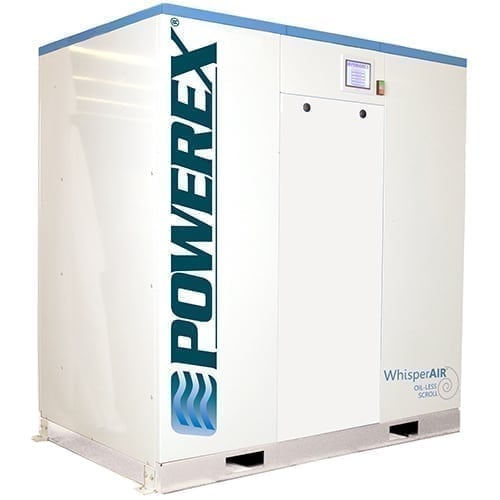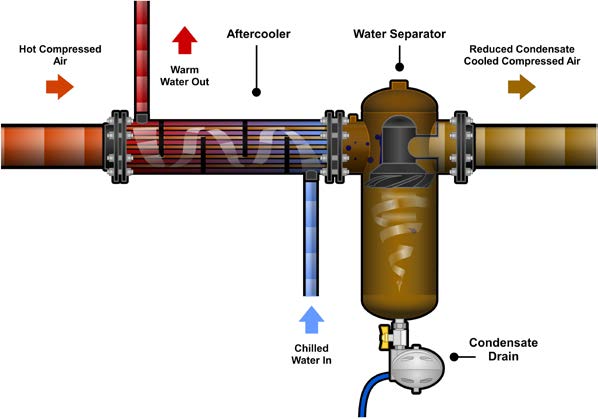Basic Components of Compressed Air Systems
Compressed air is widely used in various industries due to its availability and ease of use. It is often known as the fourth utility, following electricity, natural gas, and water.
But did you know that the idea of using compressed air to transmit energy began as early as the 1800s? During this period, metal manufacturing plants increased and highlighted the limited strength of steam.
In 1888, Austrian engineer Viktor Popp built the first compressor plant in Europe. More innovations in air compression soon followed, with new technologies eventually incorporating electricity and pneumatic energy.
Today, compressed air systems are used for a wide range of applications, from powering-up tools and assembly stations to facilitating key industrial processes. These systems now come in various shapes, sizes, and models with unique features to suit every application.
What are compressed air systems?
A compressed air system is a motor-driven mechanical device designed to deliver compressed and pressurized air. This air is often used to operate facilities and supply pressurized air to various devices. The motor in the system can operate at variable speeds or shut on and off.
Discharged air is initially compressed into a smaller size. Then it is kept under pressure and stored in a tank or cylinder. The compressed air flows through a dryer where humidity is reduced. The system then distributes its contents throughout the facilities’ pipes and machines, including diverters, automated valves, dust collectors, slide gates, and others.
In most facilities, these systems can provide about 80-90 pounds of compressed air that’s safe, sanitary, and easy to use. While earlier compressed air systems were much less versatile, modern devices are now used in various sectors including:
- Semiconductor & Electronics
- Pharmaceuticals
- Food & Beverage
- Chemicals
- Transportation
- Agriculture
- Manufacturing
Compressed air systems offer better energy cost savings. With a well-designed system, our engineers estimate that companies can save as much as 10% of their total energy bill.
Basic components of a compressed air system
Compressed air is a vital resource in many manufacturing and packaging operations, but it’s also expensive to produce. Plant air can be an expensive utility, so a properly designed compressed air system is critical to maximizing productivity and efficiency.
Knowing the components of your compressed air system is the first step to maintaining your technology in optimal condition.
Because these systems are vital to critical processes, the facility, and your organization’s productivity, you need to get them right. Knowing the exact parts of your system enables you to properly use your machine. It also makes maintenance and troubleshooting easier when problems do arise.
Below are the basic parts of a compressed air system:
The compressor is responsible for producing compressed air at the required pressure. There are two main types of compressors:
These are standard industrial air compressors known for their reliability and long service life. During compression, oil is used to seal the air, lubricate the process, or cool the entire system. Thanks to their size and air capacity, they are ideal for powering tools simultaneously onsite.
Most oil-lubricated compressors feature gapless piston rings and tighter milling tolerances to decrease oil carryover. These systems are often installed alongside various accessories depending on the industry’s unique air system demands. Oil-lubricated compressors are utilized in construction, energy, manufacturing, and agriculture.
Sometimes, lubricating oil gets carried over to the area where compression happens. This lowers the quality of the compressed air. For food, beverage, and chemical sectors where product contamination is a main concern, oil-less compressors offer a more suitable option.
Oil-free systems provide the safest and cleanest possible compressed air. These models also require lower maintenance as they do not involve frequent oil changes.

Cooling is a critical step in the air compression process. Hot air can cause your system to overheat, damaging equipment and resulting in costly breakdowns and downtime.
Most rotary screw compressors feature built-in air coolers. Air coolers must have a sufficient supply of cool, sanitary air, especially in hot summer months. Coolers should be kept in conditions below 100° F when in use.
Wet Air receiver tank
An air receiver tank is a pressure vessel that temporarily stores compressed air to be used for short, high-demand situations. There are two types of compressed air receiver: wet and dry.
Wet storage tanks are found before the air drying system. They serve as a secondary heat exchanger, boosting the reliability of the air dryer. Wet air receiver tanks also enable excess water and lubricant to condense before the air passes through the dryer.
Pre-Filter (before dryer)
The pre-filter traps foreign particles such as dust, dirt, oil, water droplets, and heavy metals before air enters the dryer. This prevents particles from contaminating the compressed air and damaging the rest of the system.
Excess moisture from water vapor can result in rusting and corrosion in pipes, valves, and other components. A dryer keeps the compressor free of moisture that can cause serious damage to the system.
After-Filter (after dryer)
After-filters are positioned after the dryer to capture contaminants before the compressed air reaches the distribution stage. This ensures that the produced air is clean and safe to use.
Dry air tank
“Dry” storage tanks are placed after the air dryer to hold compressed air that has already been filtered and dried. During high-demand situations, dry air tanks ensure air is readily available, helping reduce the burden on the air dryer.
Condensate trap
Condensate is a natural byproduct of the compression process. It must be removed before it wreaks havoc in the system.
Condensate traps or drains discharge free water and oil as they are removed from the airflow. Without a functional drain, contaminants and compressed moisture may accumulate in the system, resulting in costly maintenance and downtime.

Distribution System
The distribution system is the piping network that carries the compressed air from the compressor to the pneumatic devices. An effective distribution system must be able to transport high-quality air with maximum flow and minimum pressure drop.
Boost efficiency with compressed air systems from JHFOSTER
Compressed air systems are complex technologies that can optimize your facility’s day-to-day operations. Before introducing air compressors into your processes, your team needs to understand how each part works and what they’re used for. This will ensure that the system is used safely and correctly.
JHFOSTER supplies industrial facilities with custom air compressors and other system components. Our cutting-edge compressed air systems help companies like yours reduce downtime and maximize operational efficiency. Contact one of our experts today.
